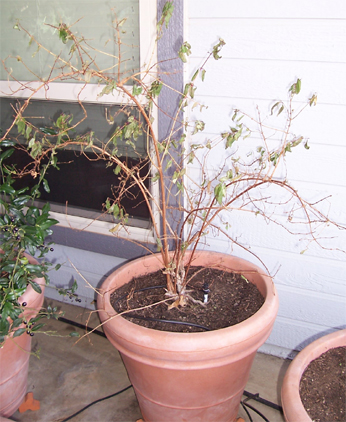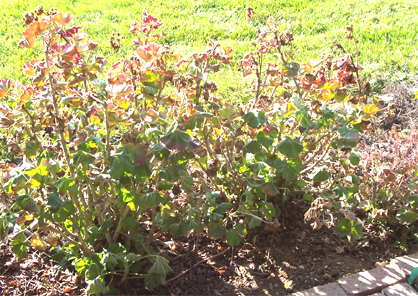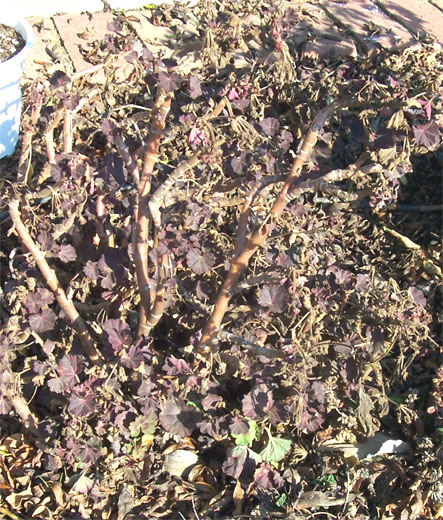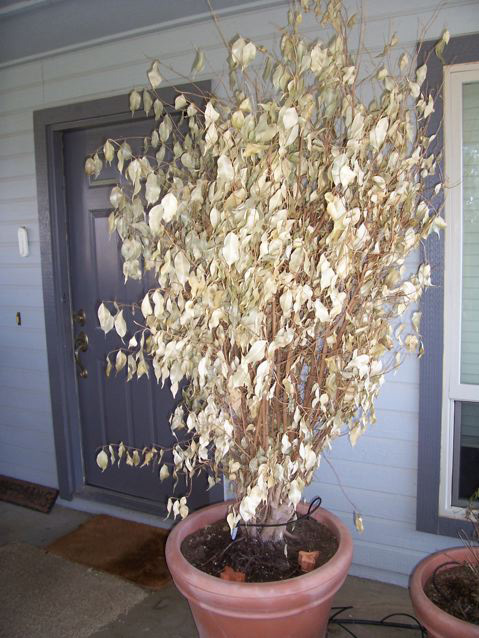
AFTER THE FREEZE: WHAT SHOULD YOU DO IN THE GARDEN?
Here's a quick quiz to warm you up on a cold day: After several days of bone-chilling mornings with temperatures dipping into the low-to-mid twenties, shivering gardeners should: a) remove all plants that look frost-bitten; b) prune away all freeze-damaged plant parts; c) Purchase and plant again this weekend those same varieties of trees, shrubs, perennials and annuals; d) water the garden, even if the plants resemble toast; e) fight the urge to prune and plant by staying indoors, next to the wood stove.
The answers happen to be the easiest to accomplish on a cold weekend: d) and e).
Even if plants in your garden look blackened and wilted, new growth may still be possible from below the effected area. Pruning away the dead portions exposes buds that may still be alive. And another frosty morning could wipe out those survivors. So, keep the shears in the garage and let the dead portions of the plants protect the understory. It may take until mid-Spring before you see new growth; patience is key before you pick up the pruners.
Make sure your garden and potted plants remain moist. Water gives off heat, and this can protect plants from freezing, especially borderline citrus trees, such as lemons and limes. Damp soil retains heat better than dry soil, protecting roots and warming the air near the soil.
Other frosty garden tips that bear repeating:
* If you still have cold-susceptible potted plants on the porch or patio, move them to a sunny spot indoors or to a west or south-facing outdoor wall.
* Another way to achieve a few degrees of protection: construct a tent around a freeze-threatened plant, especially citrus, using row cover material. Your local nursery will have several products that will do this job. Old bed sheets work well, too.
* The larger sized Christmas lights or a couple of 150-watt light bulbs located in the central area of an orange tree (or any other cold-intolerant shrub) may add two to four degrees Fahrenheit of protection.
* Harvest any citrus fruit that is ripe.
* Wrap any exposed plastic water pipes; cover outdoor faucets, as well.
* Adjust your pool, spa or pond filtration timers so that they are running when the chance of freezing temperatures is greatest, between two and nine a.m. Moving water is less susceptible to freezing.
* Make sure the backyard birdbath isn't frozen over in the morning. Daily fresh water for dogs and cats is also a good morning habit.
And what about those plants that have frozen past the point of return? Should you replace them with the same varieties? That frozen ficus may be Mother Nature's way of telling you: "Hey! This ain't San Diego! Pick outdoor plants that can take colder temperatures!"

This fuchsia may look bedraggled after the January 2007 freeze, but the greenery indicates it still might come back to life when the weather warms in spring. Look for new growth as well as pliable branches that indicate plant survival. Toss the plant if neither of those signs appear by late April here in Northern California.
>>>>>>>>>>>>>>>>>>>>>>>>

This geranium (aka Pelargonium) shows lots of frost damage at the tips. But those dead portions may help protect the green understory from future frost damage as the winter continues. Don't prune away any dead plant parts until the end of the frost season (late March, in Sacramento).
>>>>>>>>>>>>>>>>>>>>

Don't give up hope on tender perennials, such as this geranium (technically, a pelargonium), even if the plant looks totally fried after a freeze. See the green leaves at the base? The plant could spring back to life, in the spring! Keep the dead plant parts intact until all danger of frost has passed, and new growth has resumed at the base of the plant, in spring.
===============================

Feb. 2007: This would be a "frozen ficus". The normally green leaves took their sweet time turning to near-white after the January freeze event. Ficus benjamina, the weeping fig, is an iffy outdoor plant for the Central Valley. But in a protected area, such as this north-facing covered front porch, the plant can harden off over time, and come back to life each spring. Yes, the leaves will fall soon....but new leaves will soon emerge. Give suspicious plants such as this the "bend or break" test: gently bend a dead-looking stem. If it bends instead of snapping, it is probably still alive. Wait for new growth to happen. However, if that same stem breaks off cleanly with a resounding "snap", that branch is probably dead. Go a little further back into the canopy and do the bend or break test again. Maybe you will find living wood...maybe not. Don't prune off the dead portions until nighttime temperatures are above the lowest temperatures for the plant in question. In the case of the Ficus benjamina, damage can begin when nighttime temperatures fall below 40 degrees. Again, patience is key.